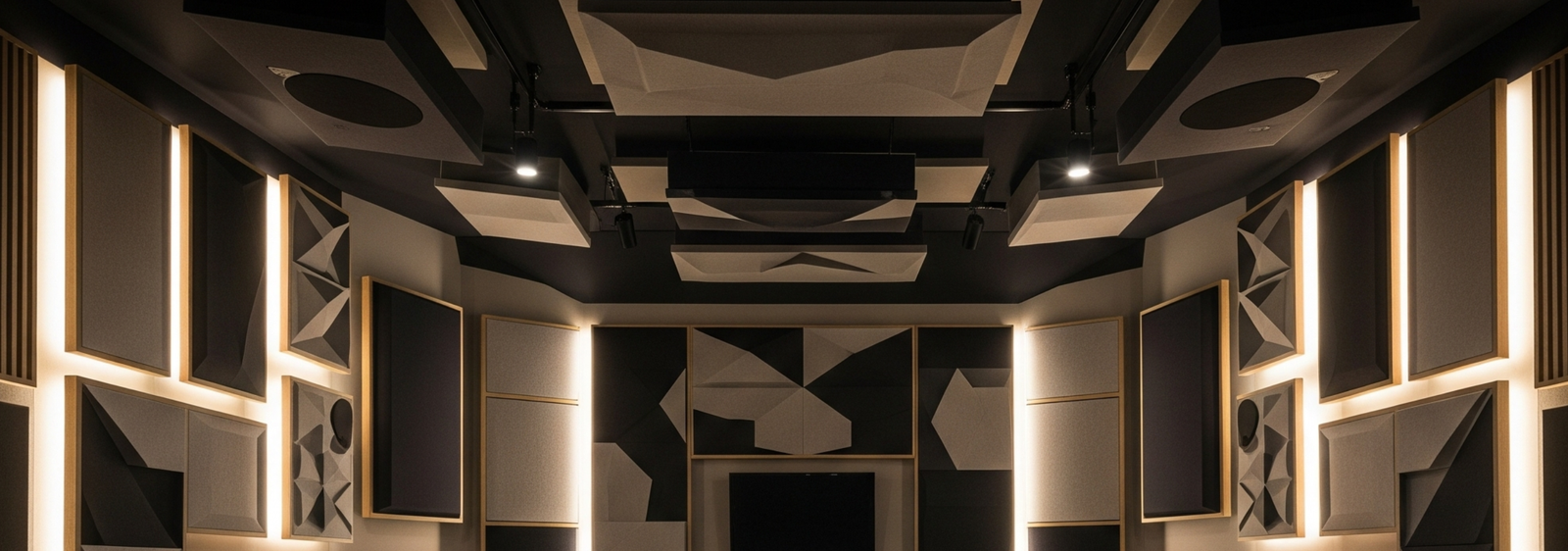
Imagine sound from a speaker behaving like light from a bulb – it travels outwards and bounces off any surface it hits. These bounces, or reflections, reach your ears moments after the direct sound from the speaker. The first and most problematic of these are called first reflection points.
Treating these specific spots is the most efficient way to improve sound clarity, stereo imaging, and reduce unwanted flutter echo. The best way to find them is with the "mirror trick."
These marked spots are the highest-priority locations for your acoustic panels.
Once you've identified the first reflection points, the question remains: where should you start? The answer depends on your room's dimensions.
In most residential or office spaces, the ceiling is the closest large, flat surface to both the sound source and the listener. This proximity is why it's often the biggest acoustic offender.
For these reasons, placing sound absorption panels on the ceiling's first reflection points often delivers the most significant improvement in room acoustics.
The "ceiling-first" rule isn't universal. In rooms with very high or vaulted ceilings, or in long, narrow spaces, the walls become the primary concern.
In these scenarios, starting your acoustic treatment on the side walls is the most effective strategy.
So far, we've focused on mid and high-frequency reflections, which are managed by standard acoustic panels. Low-frequency sound (bass) behaves differently. It's less directional and builds up in areas of high pressure, leading to room modes that cause boomy, uneven bass.
These pressure buildups are most intense in the corners of a room. To control unruly low frequencies, you need specialized, thick absorptive panels called bass traps. Placing bass traps in the corners (where walls meet, or where walls meet the ceiling) is essential for achieving a tight, balanced low-end response.
By following this targeted approach, you can systematically solve your room's acoustic problems and create a space that offers exceptional sound clarity and comfort.